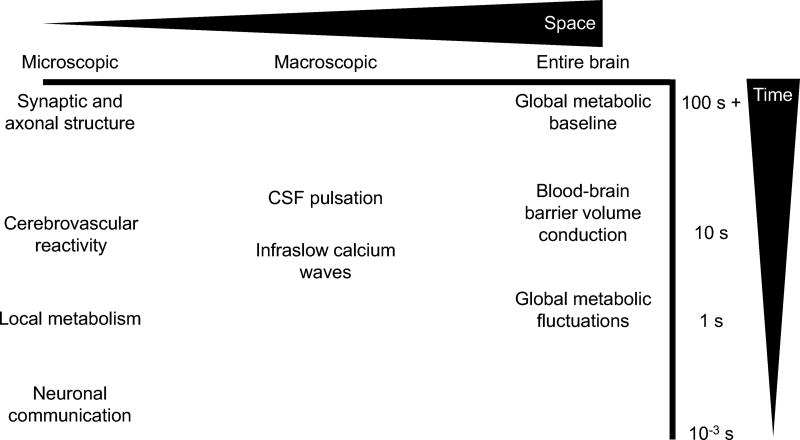Figure 4.
Potential mechanisms of dynamic rsfMRI at multiple spatiotemporal scales. Spatial scale is estimated roughly on the horizontal axis, temporal scale estimated roughly on the vertical axis. Spatially, the microscopic scale may include actual neural communication (which may be across macroscopic distances, however), local metabolism (which may be linked to global metabolism, however), and the anatomical structure on which these act. The macroscopic, but still not global, scale may include factors such as infraslow calcium waves and CSF pulsation. Some factors that influence the entire brain globally, such as volume-conduction and global metabolic changes (in particular between groups) likely also influence dynamics. While in general smaller structures correspond to faster changes, consider that neuronal communication (as fast as a few ms for an action potential) is constrained by axonal structure which may not change for years. Global brain metabolism may also fluctuate relatively quickly, but its baseline may be due to intrinsic brain health and anatomy. CSF pulsation, infraslow calcium waves, and volume conduction cluster at a temporal range close to that of dynamic rsfMRI and its correlated infraslow electrophysiology.

